Experimental Study of the Velocity of the Electrovortex Flow of In-Ga-Sn in Hemispherical Geometry
Abstract
:1. Introduction
2. Mathematical Description of Processes
3. Experimental Setup
4. Measurement Technique
4.1. The Principle of the Thermocorrelation Method
4.2. Measuring Circuit
4.3. Measurement Procedure
5. Discussion
6. Conclusions
- In this work, the thermocorrelation method was first applied to study the velocity in a current-carrying medium. The method has shown its efficiency in difficult measurement conditions and can be recommended for use in industry. Nevertheless, the excessive duration of one measurement limits the application of the method in non-stationary processes. We have found that 120 s is sufficient to average the speed values correctly.
- The measurement of the dependence of the velocity of the electric vortex flow in the hemisphere depending on the current was carried out; it was found that up to the maximum possible currents in this geometry (450–500 A, higher current creates the electric arc), the dependence has a power-law character, with an exponent close to 3/2.
- It was found that turbulent pulsations in such a system are limited from above by a frequency of 5 Hz.
- Even at relatively high currents (up to 450 A), the influence of the Earth’s magnetic field is significant and leads to a noticeable decrease in the axial flow velocity. Thus, any measurements in an axisymmetric electric vortex flow in a similar geometry made without compensation of the Earth’s magnetic field cannot be considered reliable.
Industrial Application Notes
Author Contributions
Funding
Institutional Review Board Statement
Informed Consent Statement
Data Availability Statement
Acknowledgments
Conflicts of Interest
References
- Bojarevish, V.; Freibergs, Y.; Shilova, E.I.; Shcherbinin, E.V. Electrically Induced Vortical Flows; Kluwer Academic Publishers: Dordrecht, The Netherland; Boston, MA, USA; London, UK, 1989. [Google Scholar]
- Platnieks, I.; Uhlmann, G.J. Hot-wire sensor for liquid sodium. Phys. E Sci. Instrum. 1984, 17, 862–863. [Google Scholar] [CrossRef]
- Thess, A.; Votyakov, E.V.; Kolesnikov, Y. Lorentz Force Velocimetry. Phys. Rev. Lett. 2006, 96, 164501. [Google Scholar] [CrossRef] [PubMed] [Green Version]
- Cramer, A.; Eckert, S.; Gerbeth, G. Flow measurements in liquid metals by means of the ultrasonic Doppler method and local potential probes. Eur. Phys. J. Spec. Top. 2013, 220, 25–41. [Google Scholar] [CrossRef]
- Zhilin, V.G.; Ivochkin, Y.P.; Oksman, A.A.; Lurin’sh, G.R.; Chaikovskii, A.I.; Chudnovskii, A.Y.; Shcherbinin, E.V. An experimental investigation of the velocity field in an axisymmetric electrovortical flow in a cylindrical container. Magnetohydrodynamics 1986, 22, 323–328. [Google Scholar]
- Termaat, K.P. Fluid flow measurements inside the reactor vessel of the 50 MWe Dodewaard nuclear power plant by cross-correlation of thermocouple signals. J. Phys. E Sci. Instrum. 1970, 3, 589–593. [Google Scholar] [CrossRef]
- Belyaev, I.A.; Razuvanov, N.G.; Sviridov, V.G.; Zagorsky, V.S. Temperature correlation velocimetry technique in liquid metals. Flow Meas. Instrum. 2017, 55, 37–43. [Google Scholar] [CrossRef]
- Malyshev, K.; Mihailov, E.; Teplyakov, I. Analytical study of the velocity and pressure of the electrovortex flow in hemispherical bowl in a Stokes approximation. J. Phys. Conf. Ser. 2020, 1683, 02207. [Google Scholar] [CrossRef]
- Shatrov, V.; Gerbeth, G. Stability of the electrically induced flow between two hemispherical electrodes. Magnetohydrodynamics 2012, 48, 469–483. [Google Scholar] [CrossRef]
- Chudnovsky, A.; Ivochkin, Y.; Jakoviċs, A.; Pavlovs, S.; Teplyakov, I.; Vinogradov, D. Investigations of electrovortex flows with multi electrode power supply. Magnetohydrodynamics 2020, 56, 487–498. [Google Scholar]
- Shcherbinin, E. Induction-free approximation in the theory of electrovortex flows. Magnetohydrodynamics 1991, 27, 308–311. [Google Scholar]
- Teplyakov, I.; Vinogradov, D.; Ivochkin, Y.; Kharicha, A.; Serbin, P. Applicability of different MHD approximations in electrovortex flow simulation. Magnetohydrodynamics 2018, 54, 403–416. [Google Scholar]
- Zhilin, V.; Ivochkin, Y.; Teplyakov, I. The problem of swirling of axisymmetric electrovortex flows. High Temp. 2011, 49, 927–929. [Google Scholar] [CrossRef]
- Kharicha, A.; Wu, M.; Ludwig, A.; Karimi-Sibaki, E. Influence of the earth magnetic field on electrically induced flows. J. Iron Steel Res. Int. 2012, 19, 63–66. [Google Scholar]
- Vinogradov, D.; Ivochkin, Y.; Teplyakov, I. Influence of the Earth’s Magnetic Field on the Structure of the Electrovortex Flow. Dokl. Phys. 2018, 483, 24–27. [Google Scholar] [CrossRef]
- Prokhorenko, V.; Ratushnyak, E.; Stadnyk, B.; Lakh, V.; Koval, A. Physical properties of thermometric alloy In-Ga-Sn. High Temp. 1970, 8, 374–378. [Google Scholar]
- Landau, L.D.; Lifshitz, E.M. Electrodynamics of Continuous Media, 2nd ed.; Nauka: Moscow, Russia, 1992; p. 164. [Google Scholar]
- Chudnovskii, A.Y. Evaluating the intensity of a single class of electrovortex flows. Magnetohydrodynamics 1989, 25, 406–408. [Google Scholar]
- Ivochkin, Y.; Teplyakov, I.; Vinogradov, D. Investigation of selfoscillations in electrovortex flow of liquid metal. Magnetohydrodynamics 2016, 52, 277–286. [Google Scholar] [CrossRef]
- Kharicha, A.; Teplyakov, I.; Ivochkin, Y.; Wu, M.; Ludwig, A.; Guseva, A. Experimental and numerical analysis of free surface deformation in an electrically driven flow. Exp. Therm. Fluid Sci. 2015, 62, 192–201. [Google Scholar] [CrossRef]
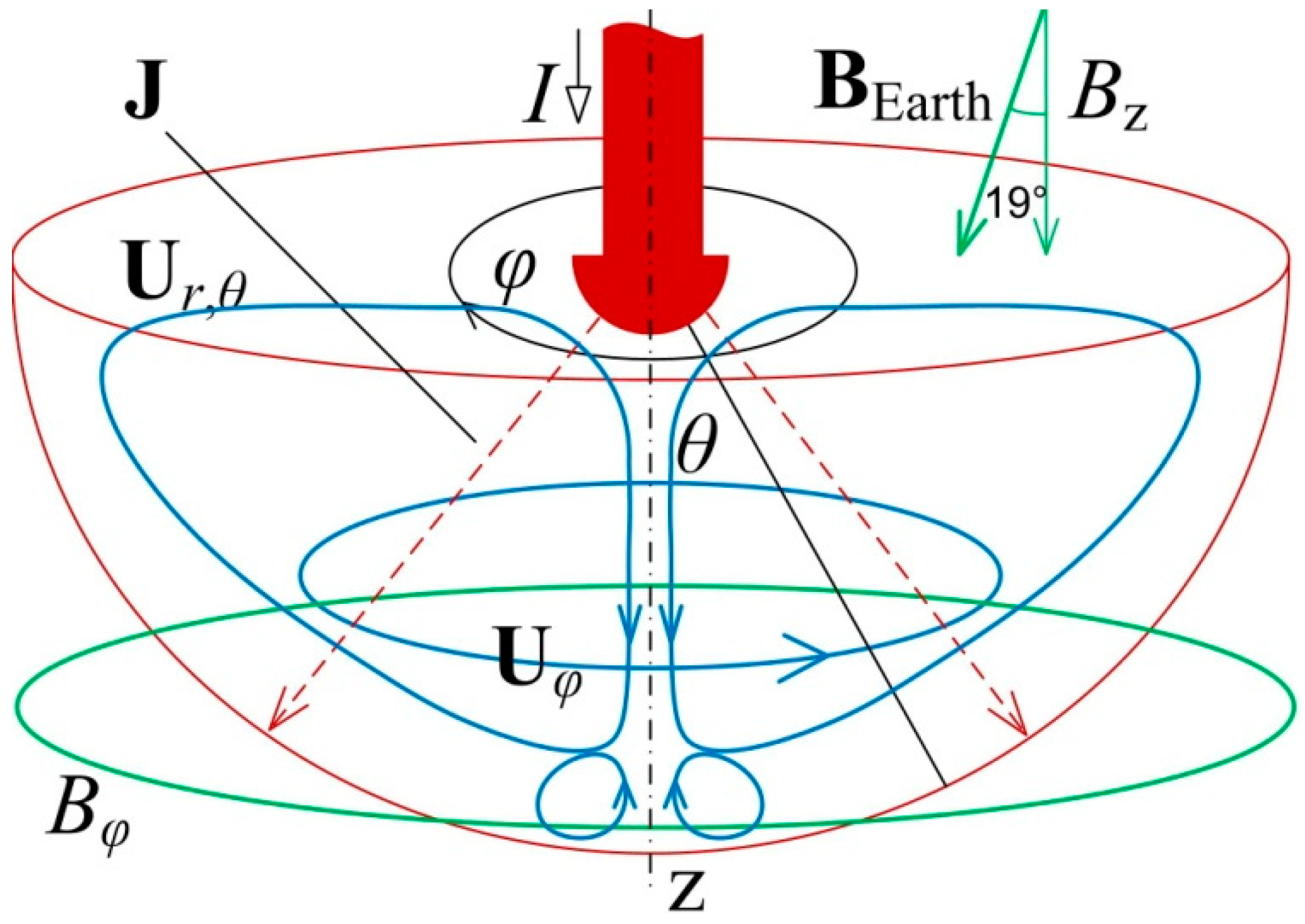
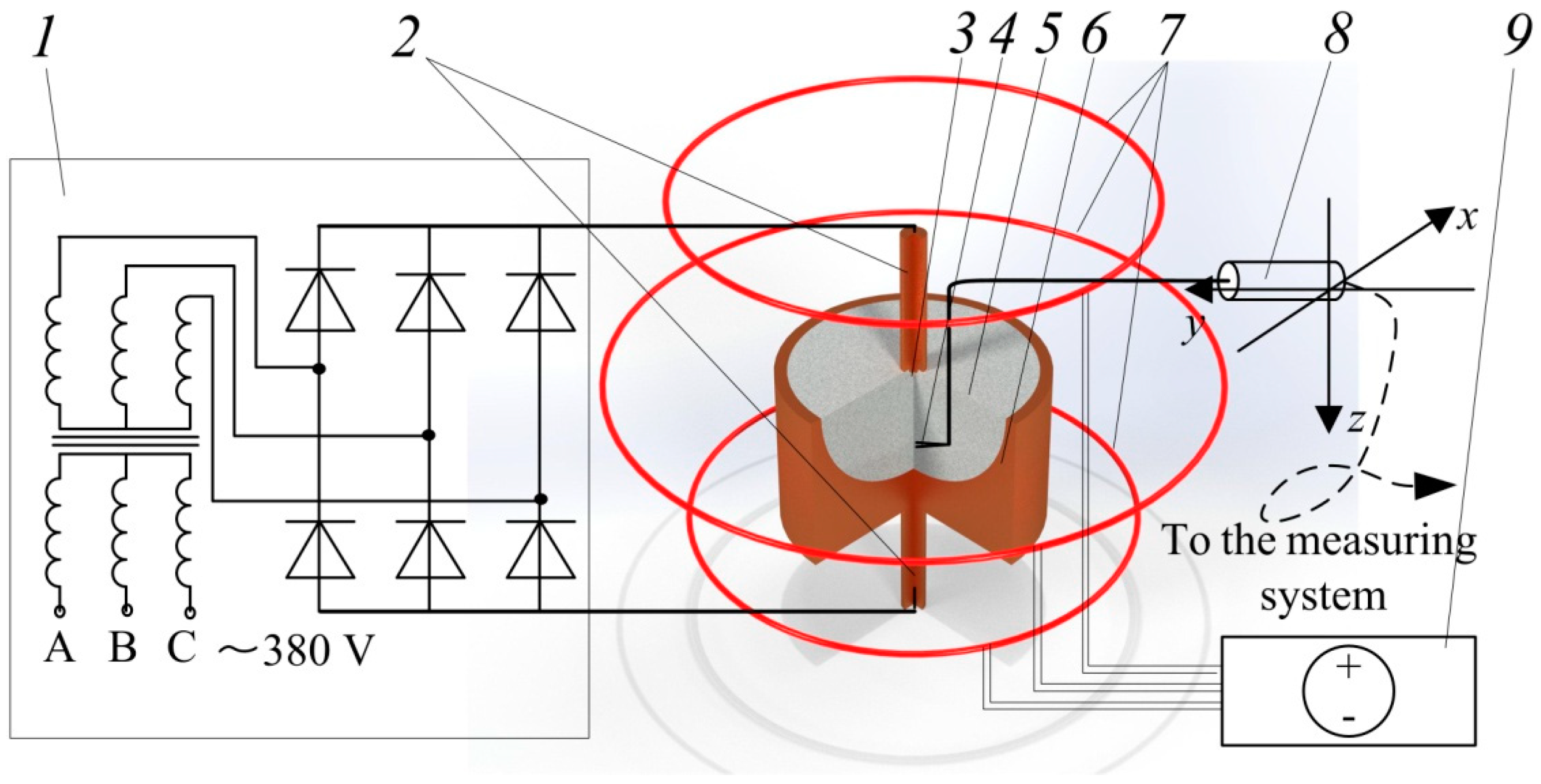

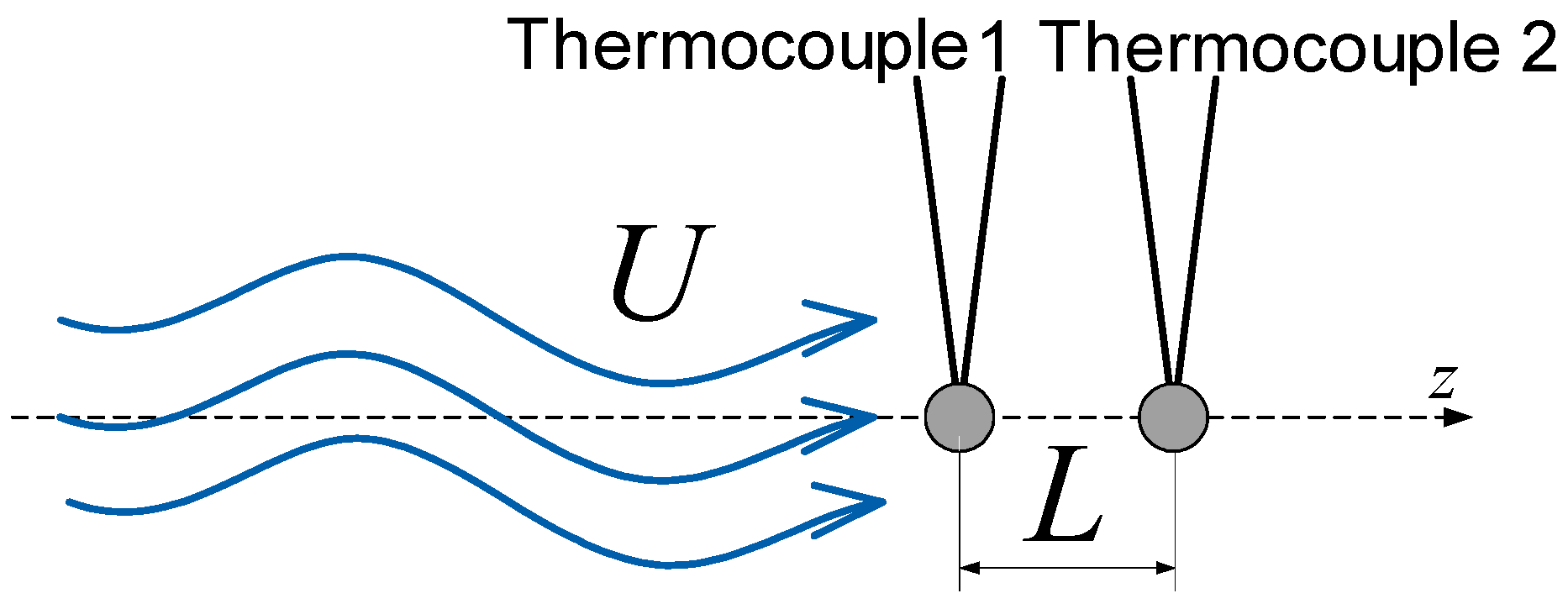
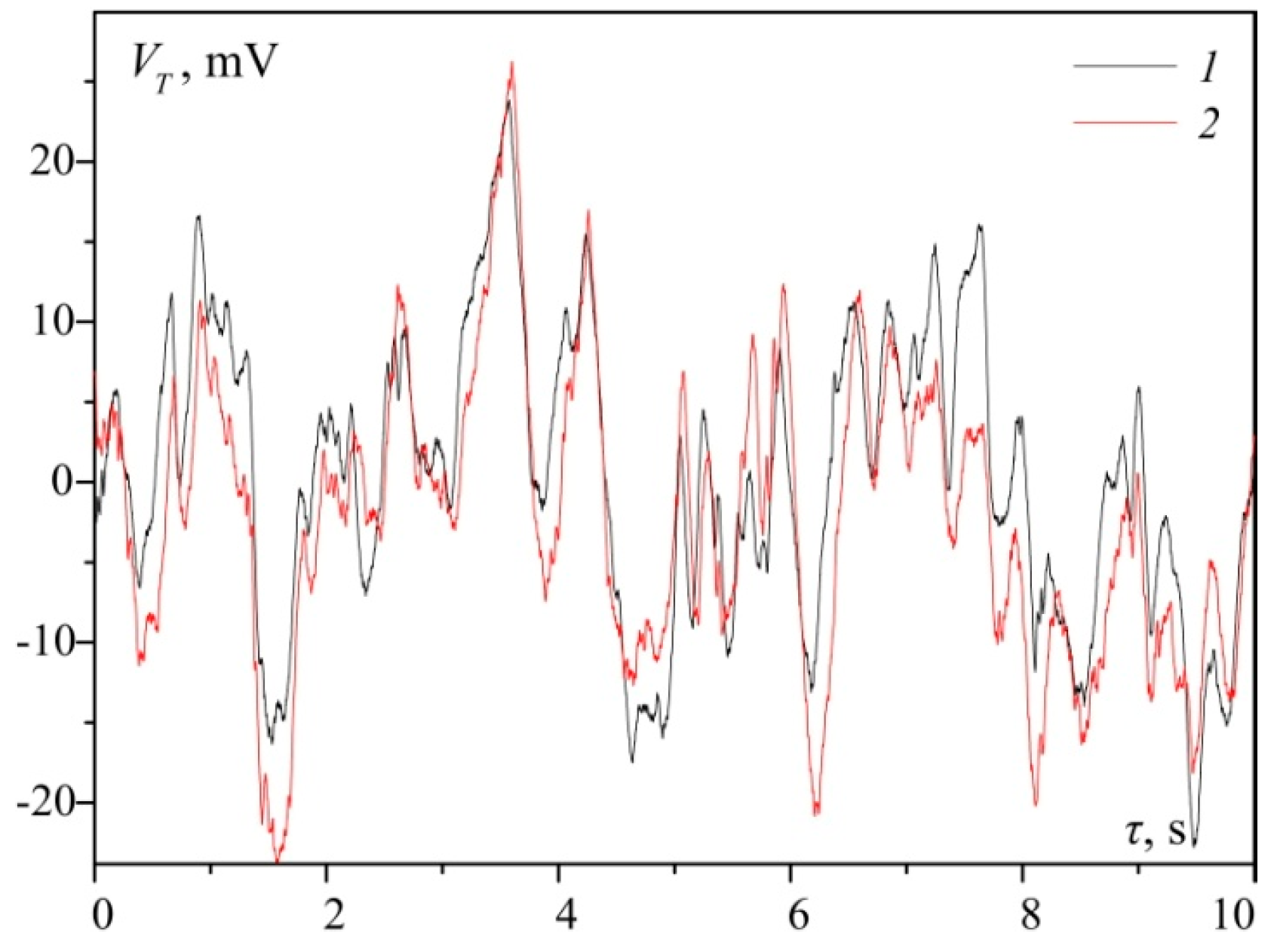
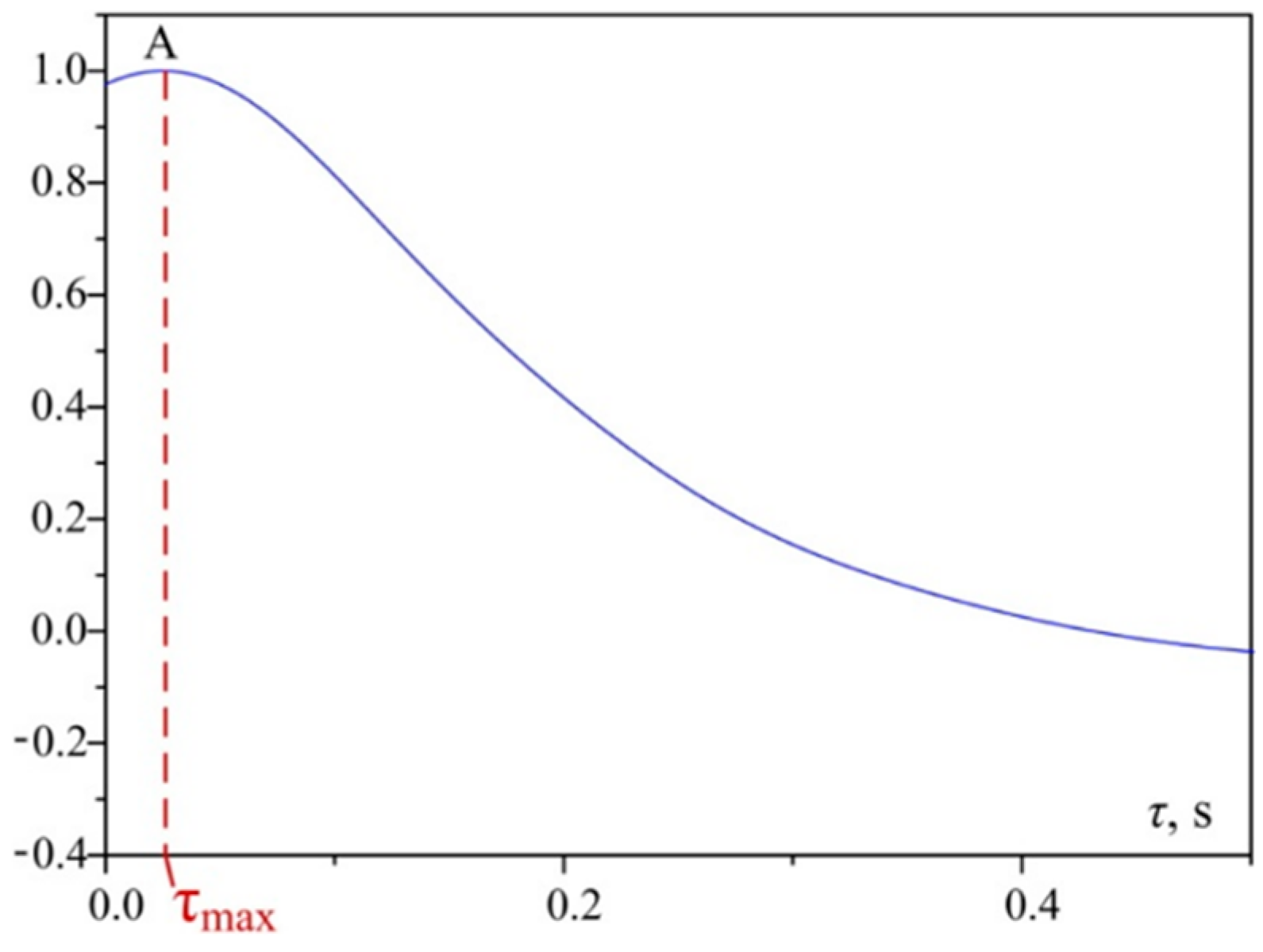


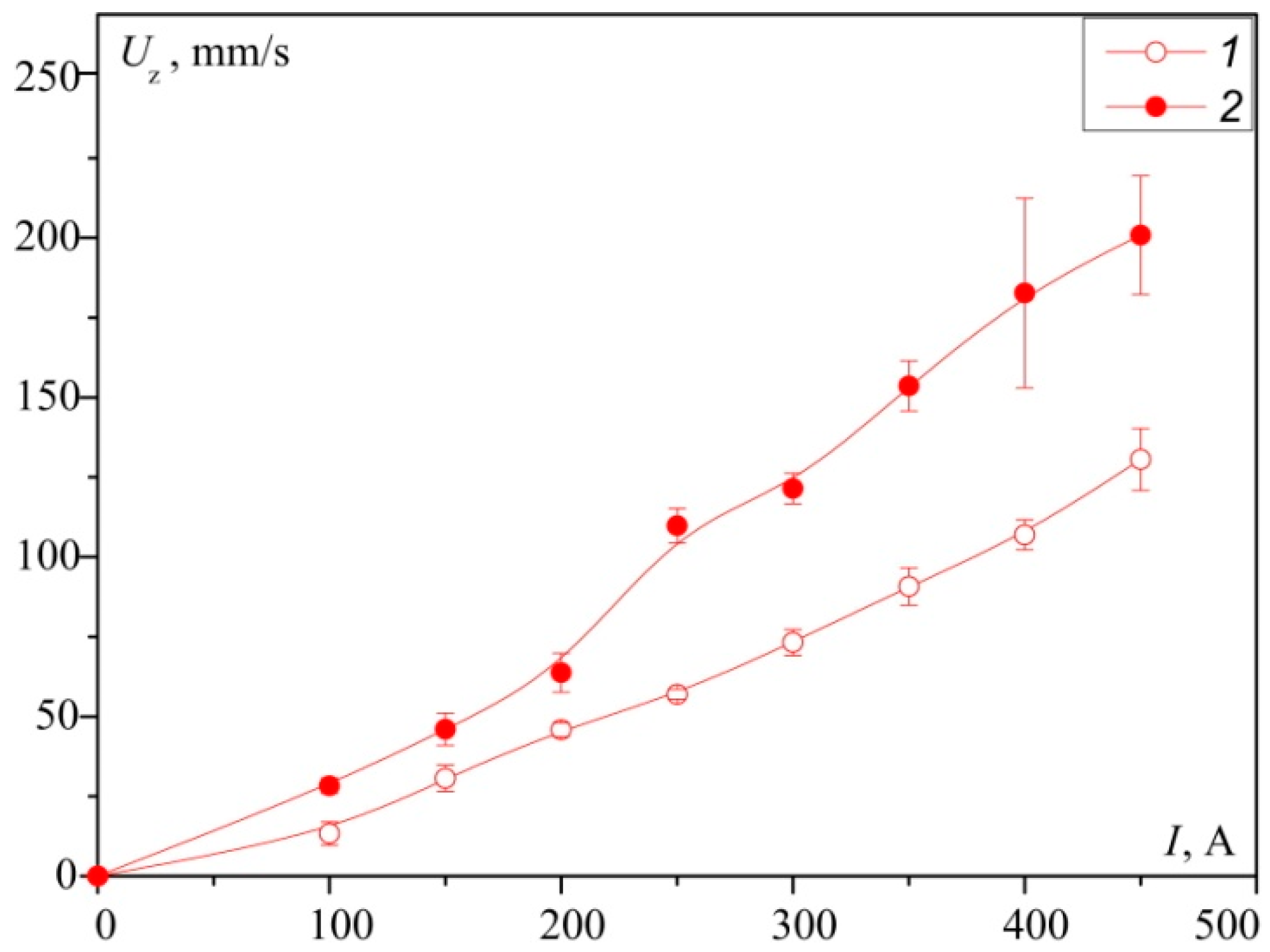


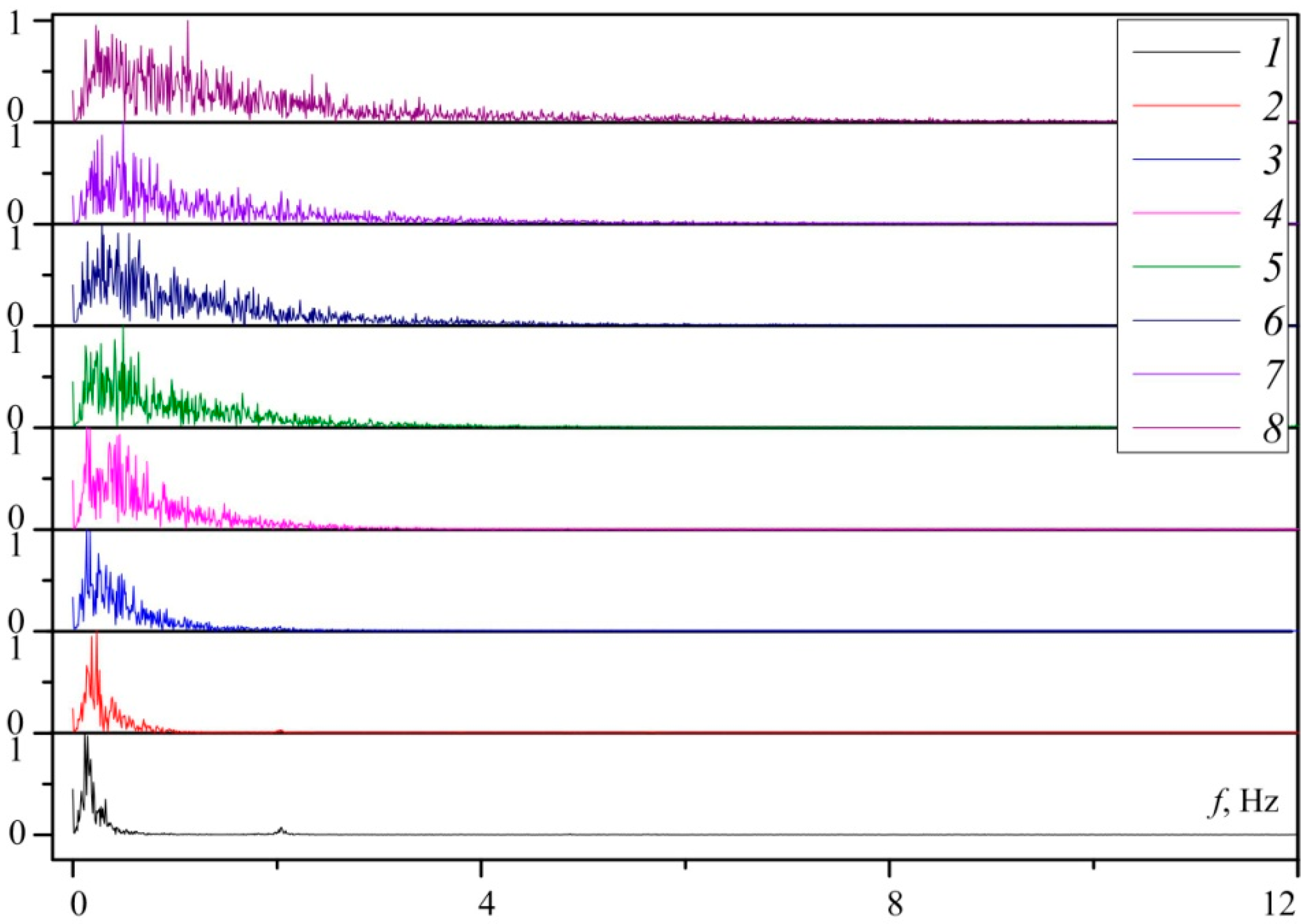
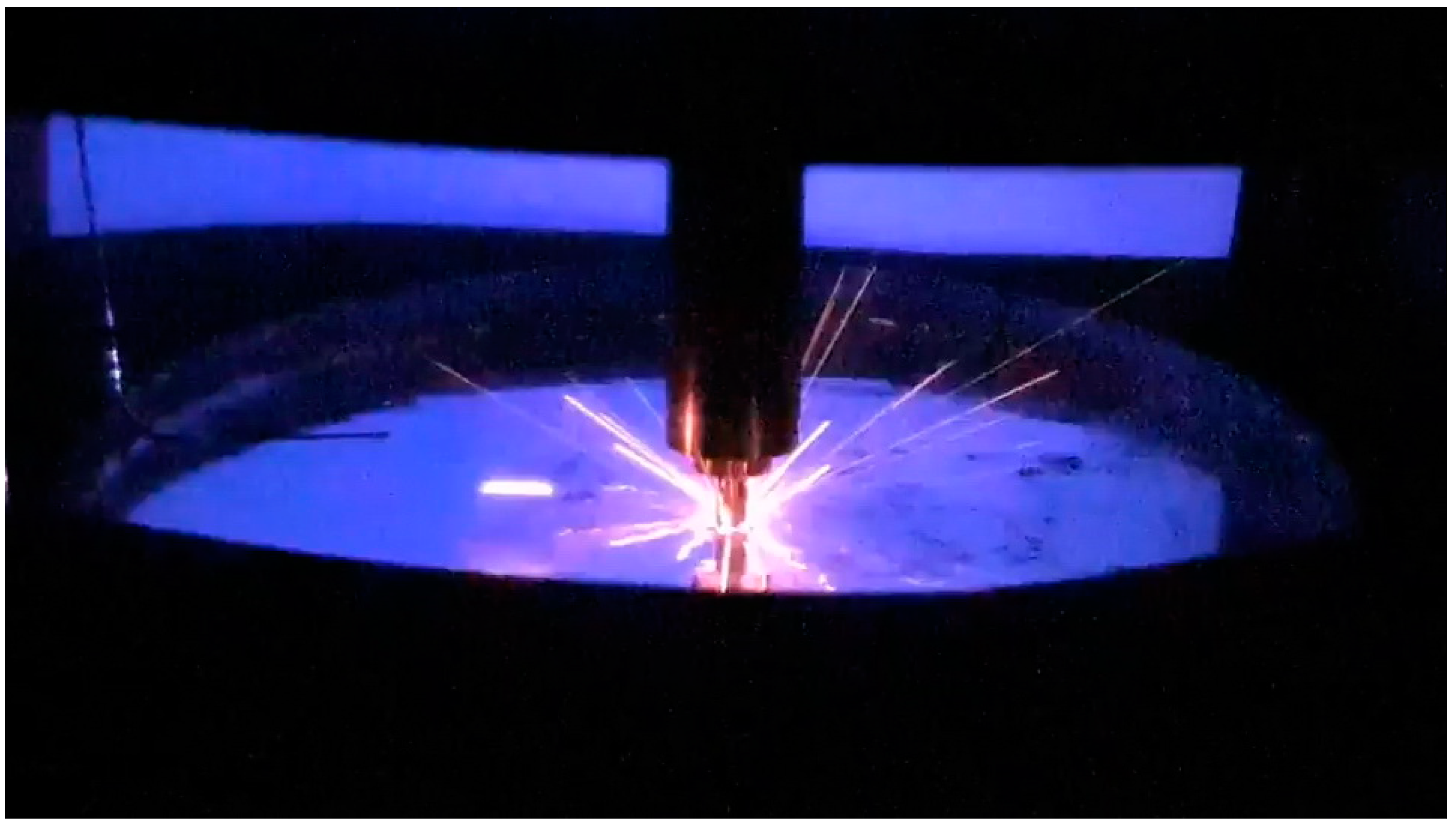
Publisher’s Note: MDPI stays neutral with regard to jurisdictional claims in published maps and institutional affiliations. |
© 2021 by the authors. Licensee MDPI, Basel, Switzerland. This article is an open access article distributed under the terms and conditions of the Creative Commons Attribution (CC BY) license (https://creativecommons.org/licenses/by/4.0/).
Share and Cite
Teplyakov, I.; Vinogradov, D.; Ivochkin, Y. Experimental Study of the Velocity of the Electrovortex Flow of In-Ga-Sn in Hemispherical Geometry. Metals 2021, 11, 1806. https://doi.org/10.3390/met11111806
Teplyakov I, Vinogradov D, Ivochkin Y. Experimental Study of the Velocity of the Electrovortex Flow of In-Ga-Sn in Hemispherical Geometry. Metals. 2021; 11(11):1806. https://doi.org/10.3390/met11111806
Chicago/Turabian StyleTeplyakov, Igor, Dmitrii Vinogradov, and Yury Ivochkin. 2021. "Experimental Study of the Velocity of the Electrovortex Flow of In-Ga-Sn in Hemispherical Geometry" Metals 11, no. 11: 1806. https://doi.org/10.3390/met11111806
APA StyleTeplyakov, I., Vinogradov, D., & Ivochkin, Y. (2021). Experimental Study of the Velocity of the Electrovortex Flow of In-Ga-Sn in Hemispherical Geometry. Metals, 11(11), 1806. https://doi.org/10.3390/met11111806




